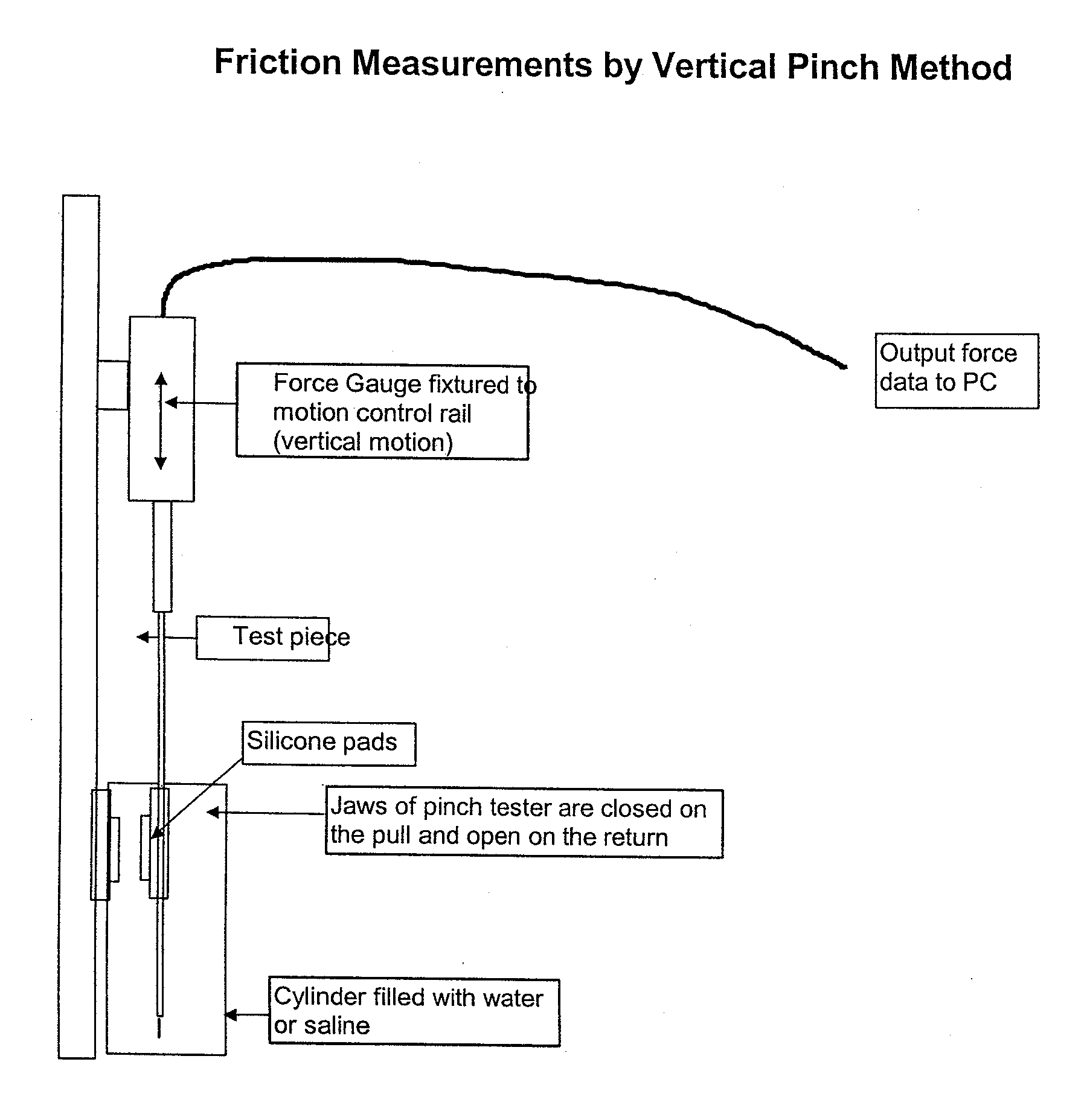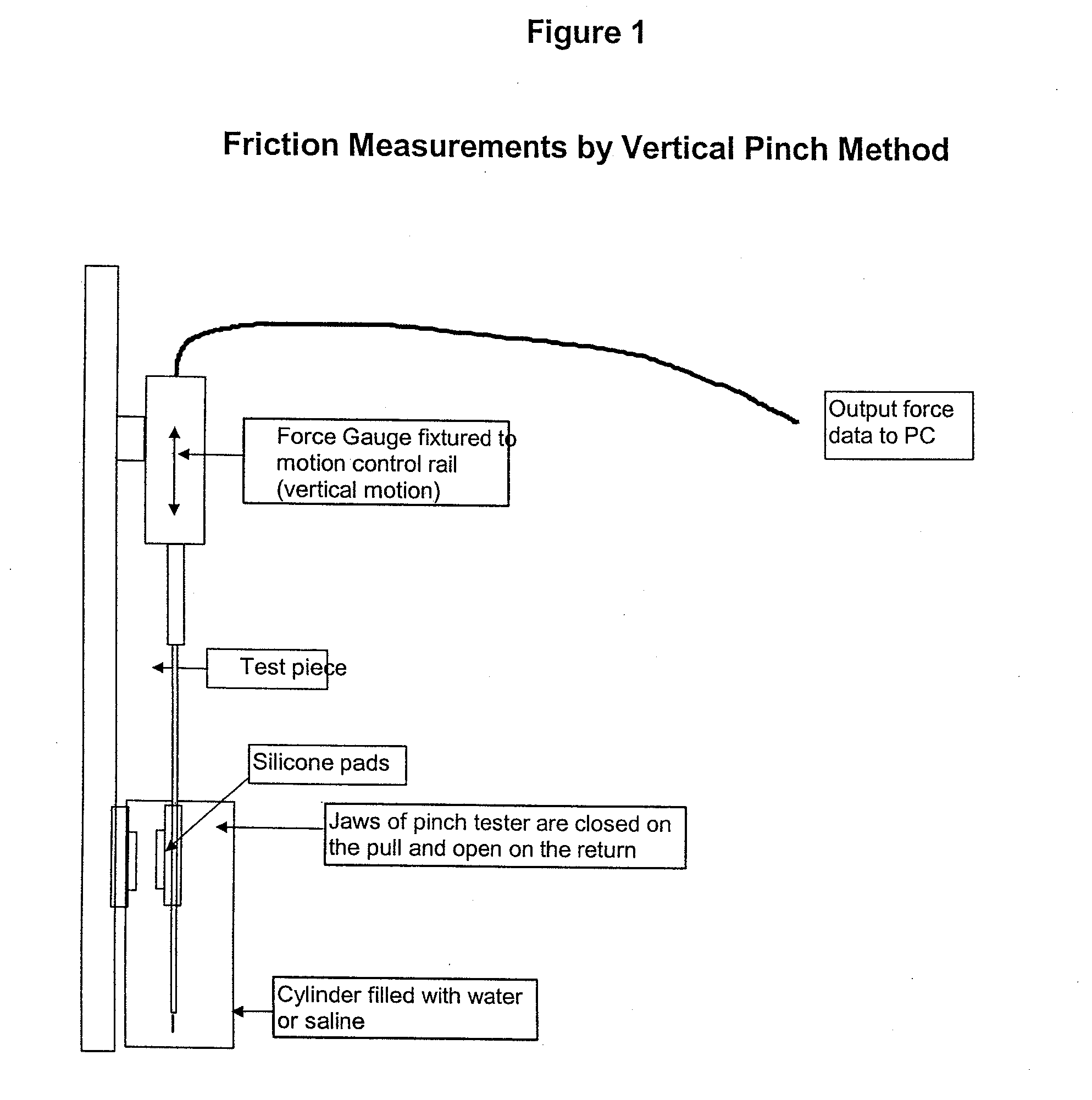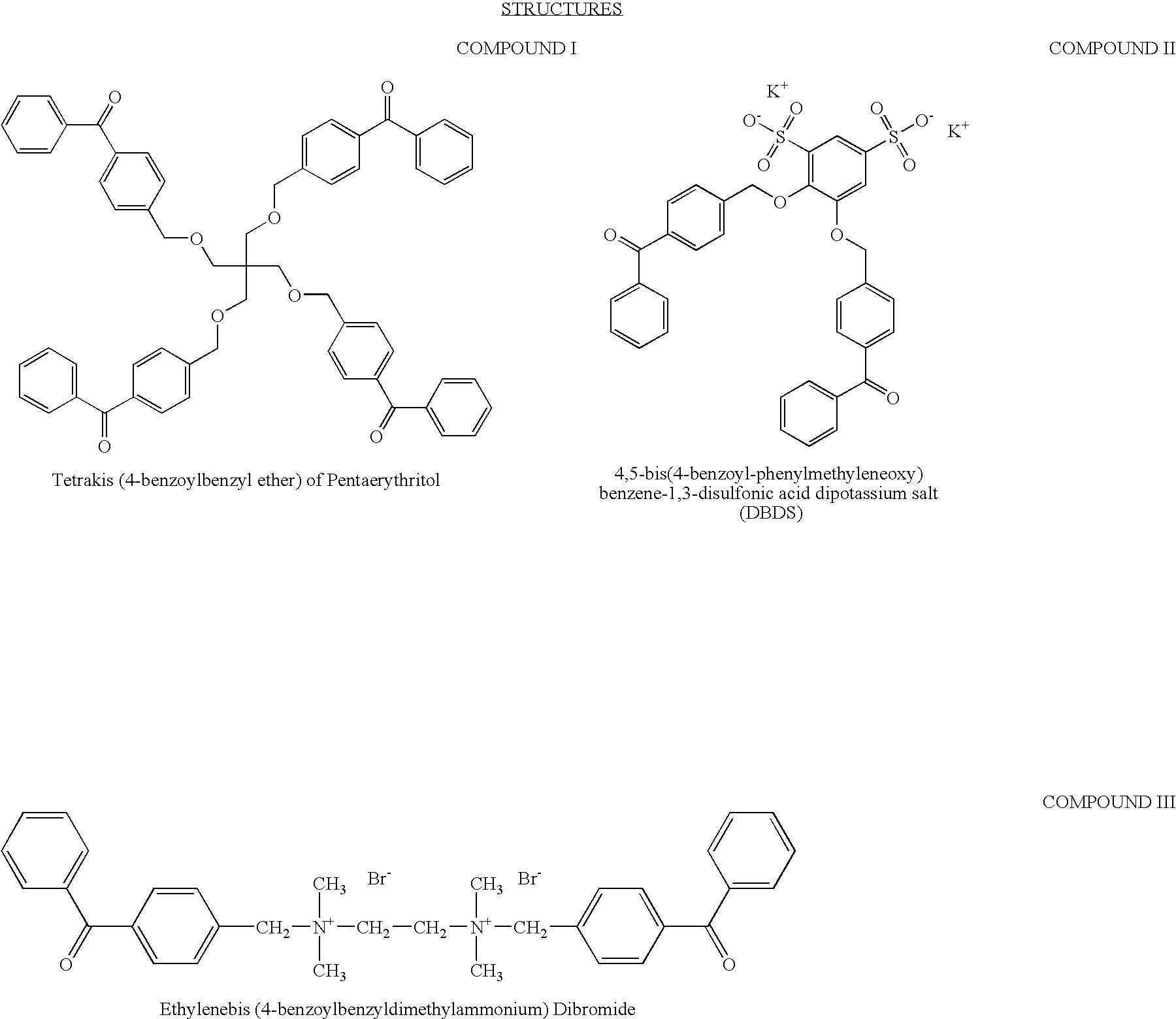Reagent and method for providing coatings on surfaces
a technology of coating and surface, applied in the field of coating and surface coating, can solve the problem of surface not being suitable for intended use, and achieve the effect of improving the surface quality and reducing the risk of contamination
- Summary
- Abstract
- Description
- Claims
- Application Information
AI Technical Summary
Benefits of technology
Problems solved by technology
Method used
Image
Examples
example 1
Surface Modification of Polyurethane (PU) by Application of Acrylamide / Acrylamidomethylpropane Sulfonic Acid (AMPS) with Compound I
[0086] Compound I was prepared according to the method described in Example 1 of U.S. Pat. No. 5,414,075. A coating solution was prepared by dissolving an amount of Compound I at 1 g / l in 100% isopropyl alcohol (IPA). Polyurethane rods (5 cm (2 in.) long, Thermedics) were wiped with an IPA (99% purity) soaked lint-free cloth and allowed to dry. The clean PU rods were then dipped into the Compound I solution, previously prepared as described above, removed from the solution at a steady rate (approximately 2 cm / sec), and allowed to dry for at least 5 minutes.
[0087] After applying Compound I to the rods, the rods were placed in a solution containing a mixture of monomers (acrylamide 3% or 7% and AMPS 7% or 3% respectively, weight to volume) in deionized (DI) water. Approximately 8 ml of the monomer mixture was placed in a glass syringe (10 ml, Micro-mate™...
example 2
Surface Modification of Polyether Block Amide (PEBAX) by Application of Acrylamide / AMPS with Compound I
[0091] A coating solution was prepared by dissolving Compound I as described in Example 1. PEBAX rods (5 cm O.D. 118, Light Blue, 20% Barium Sulfate, Medical Profiles Inc.) were coated as described in Example 1 except the rods were allowed to soak for approximately 30 minutes in Compound I coating solution. The results for lubricity / durability and bacterial adherence are shown on Table 1 and Table 2, respectively. The results shown in Table 1 indicate that the applied coating improved the lubricity of the rods as compared to uncoated controls. The results of Table 2 indicated that the control rods were not adherent to the three organisms tested, as compared to uncoated rods.
example 3
Surface Modification of Silicone Rubber (SR) by Application of Acrylamide / AMPS with Compound I
[0092] A coating solution containing Compound I was prepared as described in Example 1. SR rods (5 cm, SSF-19ETD-750, Specialty Silicone Fabricators) were coated by the same procedure as in Example 1 with the following exceptions. The SR rods to be coated were sonicated in an IPA solution for at least 10 minutes. After sonication, the rods were allowed to dry for 2 to 3 hours. The rods were also cleaned with an EPA-soaked lint-free cloth prior to coating with Compound I coating solution. The SR rods were allowed to soak for approximately 30 minutes in the Compound I coating solution. The experimental results for both lubricity / durability and bacterial adherence properties are shown in Table 1 and Table 2, respectively. The results shown in Table 1 and Table 2 indicate that the coated rods were more lubricious and significantly less adherent to the three organisms as compared with uncoated ...
PUM
 Login to view more
Login to view more Abstract
Description
Claims
Application Information
 Login to view more
Login to view more - R&D Engineer
- R&D Manager
- IP Professional
- Industry Leading Data Capabilities
- Powerful AI technology
- Patent DNA Extraction
Browse by: Latest US Patents, China's latest patents, Technical Efficacy Thesaurus, Application Domain, Technology Topic.
© 2024 PatSnap. All rights reserved.Legal|Privacy policy|Modern Slavery Act Transparency Statement|Sitemap



